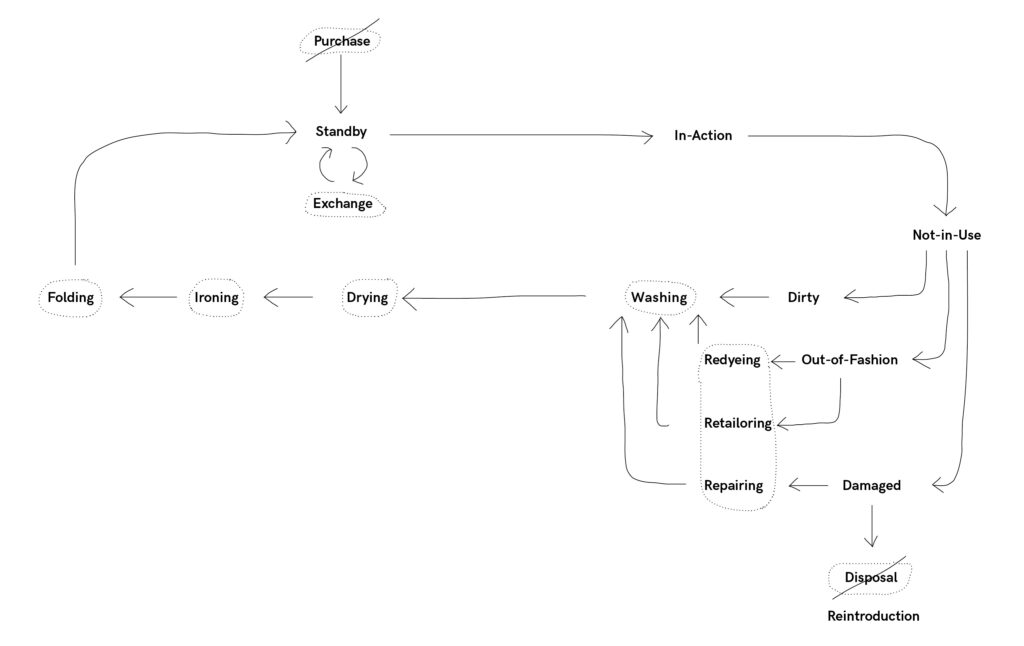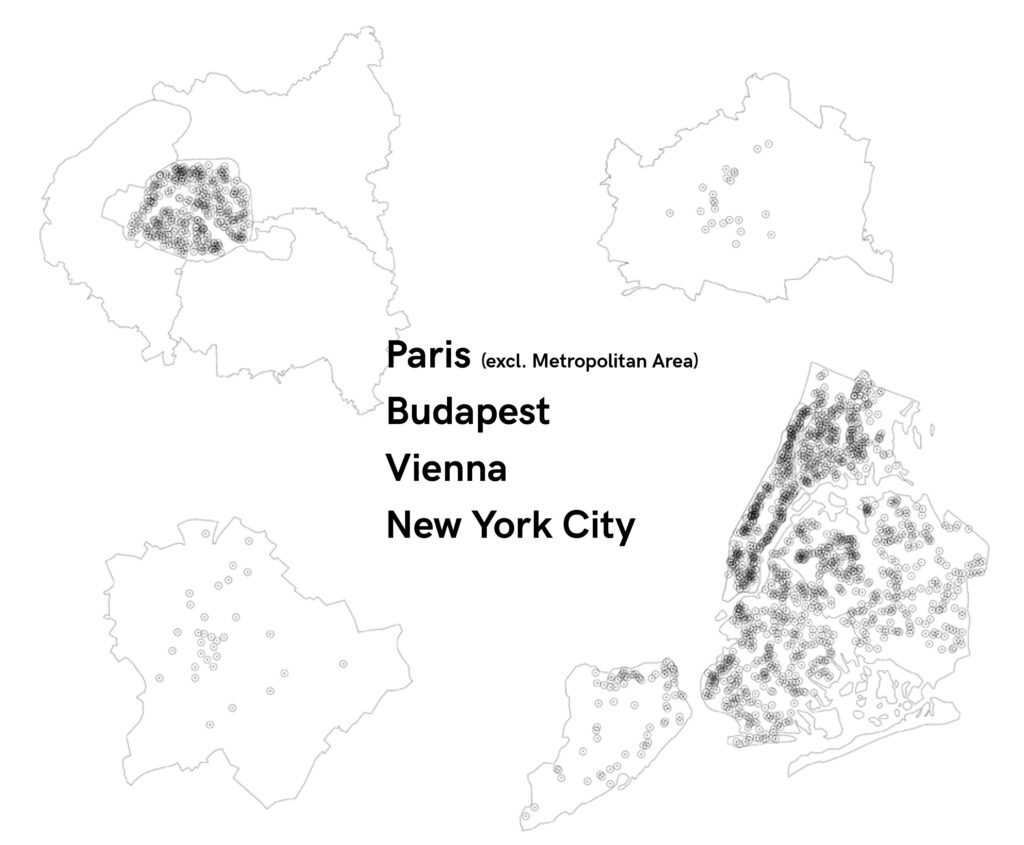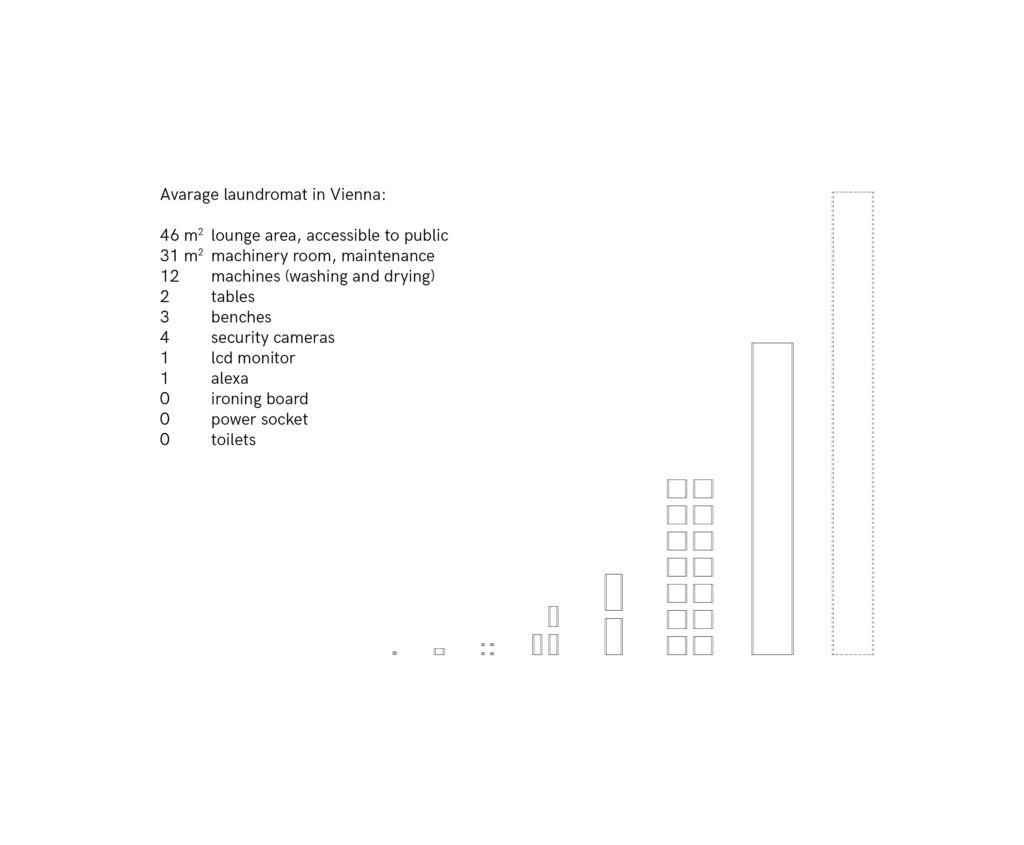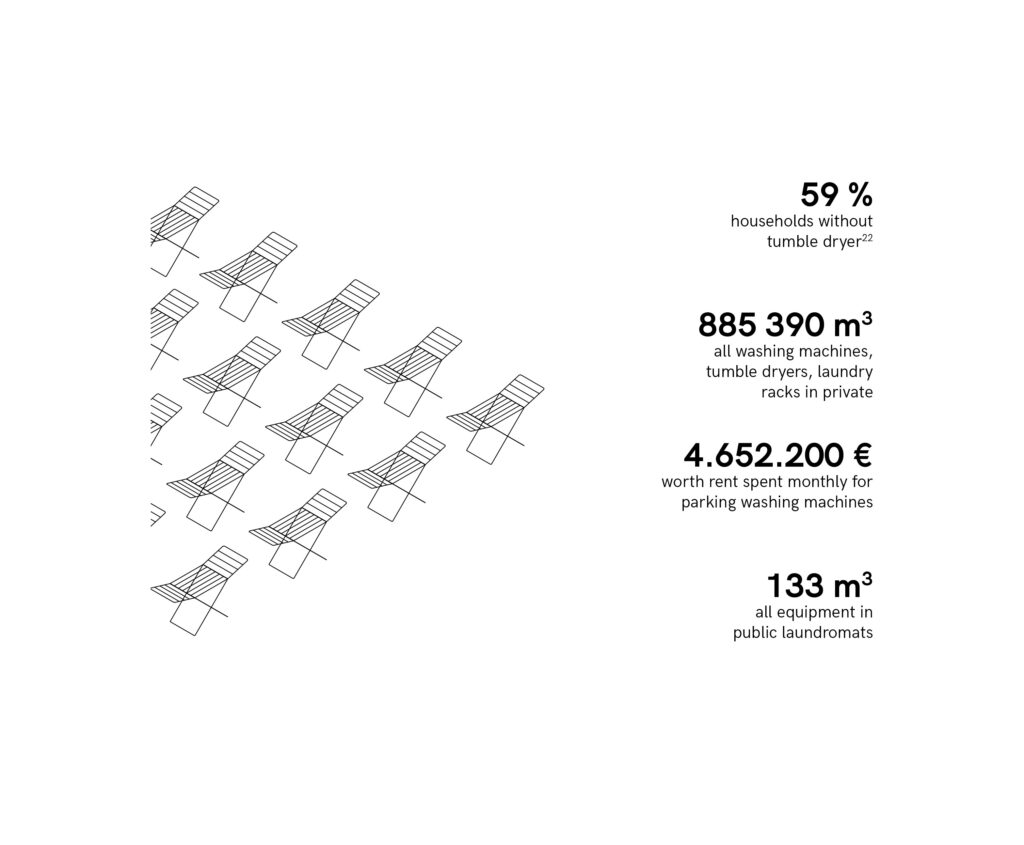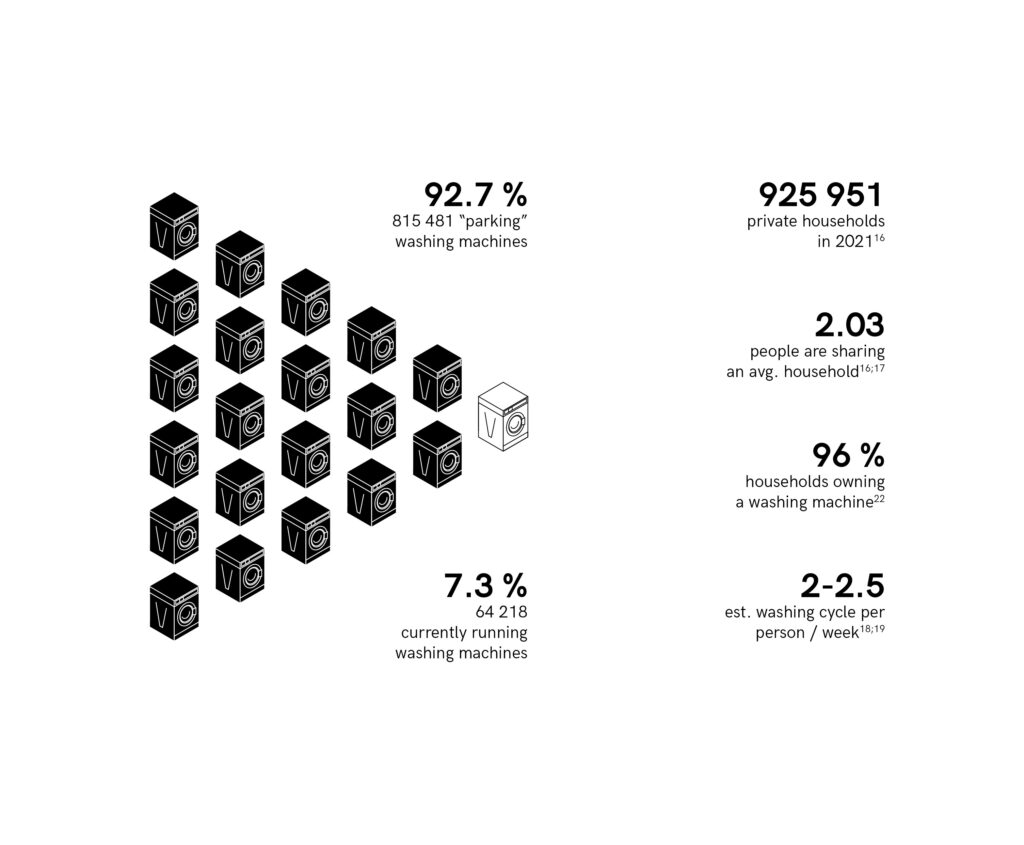
Textile hygiene has always been in connection with communality, either because of its relation or of its absence.
Socially executed manual washing faded out with the breakthrough of industrial revolutions. Later, as many societies were affected by economic recess, coin laundries gained ground as a new typology.
Today, as the equipment rates in individual households are at a high, collective washing is experiencing a drop in popularity. Social rituals transformed, the research attempts to put common social events on a map in relation to the size of the practicing group and its financial precondition.
In order to understand how a textilomat has to perform to become a relevant social platform, we have to examine laundromats in context of other social interactions.

